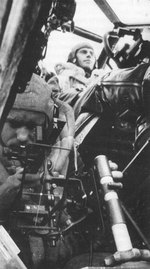Do 17
| Country | Germany |
| Manufacturer | Dornier Flugzeugwerke |
| Primary Role | Light Bomber |
| Maiden Flight | 23 November 1934 |
Contributor: C. Peter Chen
ww2dbaseThe Do 17 light (ie. fast) bombers were developed by Dornier in 1933 under the guise of civilian mail carriers, but they were in actuality bombers capable of outrunning pursuing fighters. To reduce drag, their fuselages were made as narrow as possible, hence earning the nickname Fliegender Bleistift from pilots. In 1937, Do 17P aircraft began service with Luftwaffe's long range reconnaissance units allocated to the German Army. Do 17P aircraft "rendered excellent service", recalled General der Flieger Paul Deichmann after the war. During the campaigns in Poland and France, Do 17Z aircraft served in Air Corps VIII as capable low level bombers. They were finally replaced by the modern Do 217 aircraft beginning in 1941. Several Axis nations such as Yugoslavia and Finland also employed the service of Do 17 aircraft in their air forces.
ww2dbaseSources: Spearhead for Blitzkrieg, Wikipedia.
Last Major Revision: Mar 2007
Do 17 Timeline
| 23 Nov 1934 | The Dornier Do 17 twin-engine light bomber took flight for the first time. |
SPECIFICATIONS
Do 17Z-2
| Machinery | Two BMW Bramo 323P Fafnir 9-cylinder radial engines rated at 1,000hp each |
| Armament | 6×7.92mm MG 15 or 5x7.92mm MG 15 and 1x20mm MG FF cannon |
| Crew | 4 |
| Span | 18.00 m |
| Length | 15.80 m |
| Height | 4.55 m |
| Wing Area | 55.00 m² |
| Weight, Empty | 5,209 kg |
| Weight, Maximum | 8,850 kg |
| Speed, Maximum | 427 km/h |
| Service Ceiling | 8,200 m |
| Range, Normal | 1,160 km |
Photographs
 |  |
Please consider supporting us on Patreon. Even $1 per month will go a long way! Thank you. Please help us spread the word: Stay updated with WW2DB: |
Visitor Submitted Comments
14 Jan 2011 12:59:06 PM
Three Dornier Do19s were built, one flew the other two were scrapped.
The remaining prototype was transfered to the Luftwaffe, and operated with transport
gruppe KGrzbv.105
SHORTSIGHTED:
The Do19 could have been developed into the
4-engine bomber the Luftwaffe needed.
When World War II started the need for a long
range bomber was seen However, much of the
development time had been lost.
Long-range bombing missions would have been more effective against Britain and Russia.
Hermann Goring upon advice from Wever's
successior's Kesselring, Udet and Milch killed the Do19.
Goring shelved the bomber, and later said
"The Fuhrer will never ask me how big our bombers are, but how many we have".
28 Jan 2019 07:30:51 AM
Fliegender Bleistift translated to "flying pencil."
All visitor submitted comments are opinions of those making the submissions and do not reflect views of WW2DB.

» German Luftwaffe Losses, Jul-Sep 1940
- » 1,176 biographies
- » 337 events
- » 44,933 timeline entries
- » 1,245 ships
- » 350 aircraft models
- » 207 vehicle models
- » 376 weapon models
- » 123 historical documents
- » 261 facilities
- » 470 book reviews
- » 28,471 photos
- » 365 maps
Joachim von Ribbentrop, German Foreign Minister, Aug 1939
14 Jan 2011 09:51:32 AM
THE BOMBER THAT NEVER WAS:
Another bomber not listed is the Dornier Do19
The Luftwaffe lacked a 4-engine heavy bomber
the bombers advocate was General Walther Wever the Luftwaffe's First Chief of Staff.
DEATH OF THE DORNIER DO 19
Both Dornier and Junkers built prototypes when General Wever was killed in a air crash the program died with him.
His successors developed twin-engine bombers and believed they would be more effective.